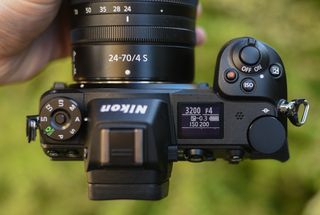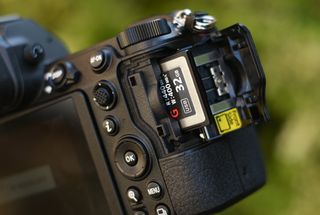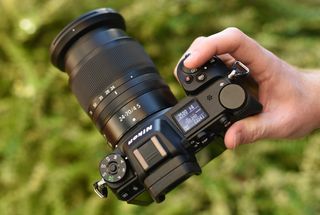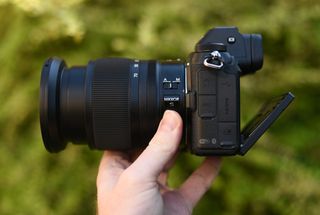Nikon was a little late to the mirrorless game with its 1 system, and it wasn't what a lot of people expected (nor wanted). With relatively small 1-inch sensors and bodies that were a little too devoid of physical control, there just wasn't enough here to tempt the enthusiast away from either their DSLRs or rival mirrorless systems, and they quietly disappeared from Nikon's website.
The more senior of the pair is the Nikon Z7, whose closest equivalent in the company's DSLR lineup is the hugely successful D850. With Sony's now on its ninth full-frame mirrorless camera, and Canon spoiling Nikon's fun quite recently with its own full-frame mirrorless EOS R model, the Z7 has been launched at a time where it won't get an easy ride. That said, many photographers have been waiting patiently to see what Nikon would end up doing, and, minor card slot debacle aside, the response from the photographic community had been overwhelmingly positive.
Nikon Z7: features
- 45.7MP BSI full-frame sensor
- 5-axis Vibration Reduction system
- 4K UHD video recording
The Z7 shares a 45.7MP (effective) pixel count with the company's still-popular D850 DSLR, and both sensors have a backside-illuminated (BSI) design to help with light capture, together with no anti-aliasing filter for better detail capture. The sensor in the Z7, however, is different; while we're not told quite how it compares in terms of performance, it contains 493 phase-detect AF pixels to help with focusing – more on this later.
There's also a new lens mount, which currently accepts three native lenses, but many more are promised over the next few years. The flange depth measures just 16mm and the diameter of the lens mount is a wide 55mm, which bodes well for high-quality lenses with wide apertures. Next year will, for example, welcome a NIKKOR Z 58mm f/0.95 S Noct lens, which Nikon has made a lot of noise about since the launch of the Z system.
NIKON Z7 SPECS
Sensor: 45.7MP full-frame CMOS
Lens mount: Nikon Z mount
Screen: 3.2-inch tilt-angle touchscreen, 2,100,000 dots
Burst shooting: 9fps
Autofocus: Hybrid AF, including 493-point phase-detect AF
Video: 4K
Connectivity: Bluetooth and Wi-Fi
Battery life: 330 shots
Weight: 675g (including battery and card)
Images from the Z7 are output at a maximum resolution of 8256 x 5504 and tend to weigh around 17-31MB, depending on what it is you're capturing, ISO setting and so on. Opened up in Photoshop, these measure a hefty 130MB at default settings.
The Z7 can also be set to capture 14-bit Raw files, in either compressed, losslessly compressed or uncompressed formats, and you can also output TIFFs straight away if you need to.
One of the most significant changes between the Z7 and its DSLR cousins is that Vibration Reduction is located inside the camera, rather than in the lens. This system is said to be effective for up to five stops, and can work over five axes: roll, pitch, yaw and X an Y shift.
The main advantage of this VR system for the current Nikon user is that their older non-stabilised lenses can suddenly benefit from the equivalent technology inside the Z7. This is made possible through the optional FTZ adapter, which allows F-mount lenses to be mounted. Nikon assures owners that AF and auto-exposure will be maintained with around 90 or so lenses, and AF will be maintained for around 360 in total. And, if you happen to be using an optic with VR included, the two systems with join forces and work together.
4K video recording is offered only in the 4K UHD (3840x2160) flavour, rather than in both DCI 4K and UHD 4K, and footage can be captured at 30, 25 and 24p. If you're happy to apply a DX crop to footage – this may, after all, even be preferable depending on your subject, lens and so on – Nikon promises that you'll actually benefit from slightly crisper footage, as it will capture 5K-worth of information with full-pixel readout, before downsampling this to a 4K output.
As is now becoming standard on such cameras, 4K recording is supported by Full HD recording to a maximum 120/100p, which can respectively be output 5x and 4x slower, and the option to capture 4K-resolution (8.3MP) stills during recording has also made the cut.
Nikon has also chosen the Z7 to debut its own Log shooting function, dubbed N-Log, and this is bolstered by a raft of features such as zebra patterning, focus peaking, timecode. An electronic version of the company's Vibration Reduction can also be called upon to steady recordings, either on its own or in conjunction with the sensor-based system, and you can hook up both a microphone and set of headphones through ports at the camera's side for audio monitoring and recording respectively.






Post a Comment